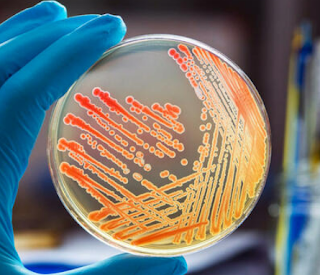Microbiology is an essential science that deals with the study of microscopic organisms. In order to ensure the safety and quality of drug products, the U.S. Food and Drug Administration (FDA) employs microbiologists to conduct inspections at various stages of the production process.
FDA inspections are typically conducted when a company believes that its products may present an imminent health hazard to consumers. The primary goal of an inspection is to assess the safety of the products being manufactured and to ensure that all necessary procedures are in place to prevent any potential harm. During an inspection, FDA representatives will review documentation related to the product, visit production facilities, and interview employees. They may also sample products for testing purposes. FDA inspections are typically announced in advance, although the agency may also conduct unannounced inspections in some cases.
The first step when addressing microbiology concerns during an inspection is to identify the potential sources of contamination. This includes looking at the environment, equipment, and products being handled. Next, the microbiologist will test to see if any of these sources are causing contamination. Finally, the microbiologist will take steps to prevent further contamination.
Some common methods used by microbiologists to address microbiology concerns during an inspection include:
FDA inspections are typically conducted when a company believes that its products may present an imminent health hazard to consumers. The primary goal of an inspection is to assess the safety of the products being manufactured and to ensure that all necessary procedures are in place to prevent any potential harm. During an inspection, FDA representatives will review documentation related to the product, visit production facilities, and interview employees. They may also sample products for testing purposes. FDA inspections are typically announced in advance, although the agency may also conduct unannounced inspections in some cases.
What to Expect During a FDA Inspection
If you have a microbiological concern, be prepared for a FDA inspection. Here are some typical concerns that inspectors may find during a visit:- Unsanitary conditions or contamination of products with bacteria, fungus, or other pathogens
- Failure to properly sanitize equipment or surfaces
- Incorrect storage of product preparation ingredients, such as raw material or packaging material
- Untreated water used for the preparation of drug products
- Insufficient or incorrect personnel training
- Failure to follow proper procedures for the handling of hazardous drugs
- Lack of a quality control unit or inadequately trained personnel in the quality control unit
Common microbiology concerns during a FDA inspection
There are many different types of microbiology concerns that can come up during a FDA inspection of pharmaceuticals. However, some of the most common concerns involve issues with water quality, air quality, and cleanliness of the manufacturing environment. Additionally, inspectors may also look for evidence of microbial contamination in finished products.How do you address microbiology concerns during an inspection?
Microbiology is one of the most important areas of inspection for the FDA. Concerns about microbiological contamination can lead to serious health problems for people who consume drug products that have been contaminated. Microbiologists are experts on the microbial life forms that can contaminate pharmaceutical products, and they are responsible for monitoring product safety during an inspection.The first step when addressing microbiology concerns during an inspection is to identify the potential sources of contamination. This includes looking at the environment, equipment, and products being handled. Next, the microbiologist will test to see if any of these sources are causing contamination. Finally, the microbiologist will take steps to prevent further contamination.
Some common methods used by microbiologists to address microbiology concerns during an inspection include:
- Testing for microorganisms: The microbiologist may use a variety of tests to look for microorganisms such as culturing, counting and selective microbial tests for pathogens.
- Cleaning and sanitizing equipment: The microbiologist may clean and sanitize equipment to reduce the chance of bacteria spreading.
- Using protective clothing and equipment: The microbiologist may use protective clothing and equipment to avoid contact with products or surfaces that may be contaminated.
Get documents for Audit preparation in MS-Word FormatView List


No comments:
Post a Comment
Please don't spam. Comments having links would not be published.